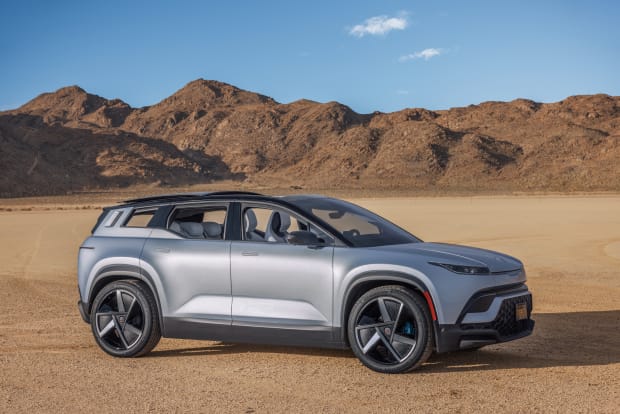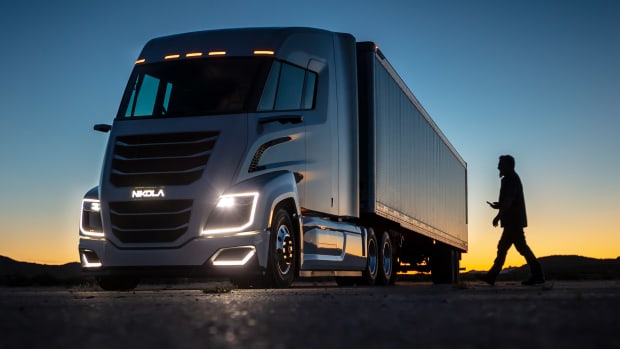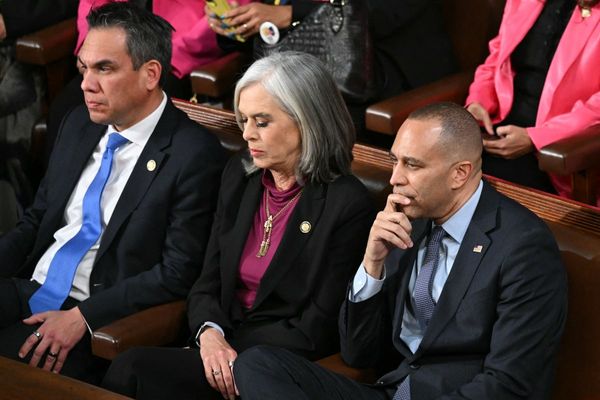
Rivian is now alone in the galaxy of EV startups, most of which want to become the next Tesla.
The young electric-vehicle manufacturer, based in Irvine, Calif., has just sent positive signals to investors after a cascade of bad news among its peers.
Most of these disruptors, which are ramping up production, recently have either lowered their forecasts for this year or warned that they may be short of cash to continue operating normally.
Lucid Motors, (LCID) held 61% as of Dec. 30, 2022, by Public Investment Fund, the sovereign-wealth fund of Saudi Arabia, said on May 8 it planned to manufacture "over 10,000” Air sedans this year compared with the 10,000 to 14,000 it estimated in February.
The new guidance indicates that the automaker is facing a demand problem as Tesla (TSLA) has launched a price war. In addition, the supply chains for EV remain disrupted.
Nikola and Fisker Send Warnings
For its part, Fisker, (FSR) manufacturer of the Ocean SUV and the Pear crossover, has cut its production forecast for this year to between 32,000 and 36,000 units. The group previously planned to produce 42,000 vehicles this year.
"This adjustment reflects updated homologation timing, supply chain maturity and ramp readiness progress," the company said in a statement on May 9.

Electric-truck manufacturer Nikola (NKLA) stressed the urgency of reducing cash usage, saying that its cash-burn rate was "not sustainable.” The company burned $240 million in the first quarter. Overall, Nikola has been burning $200 million per quarter.
"This level of cash burn is not sustainable for our business, and we are looking at every option for reductions in spending," Chief Financial Officer Stasy Pasterick told investors and analysts on May 9 during the first-quarter-earnings call. "We are already beginning to see some progress with April cash burn coming in at $46 million.
"I am personally driving renewed focus on aggressive management of all three pillars of working capital: cost reductions, specifically payables; inventory procurement and management; and of course, cash collections.
"We already have a line of sight to achieve approximately $150 million cash burn per quarter and are working intently to reduce quarterly cash burn further, with targets of $120 million by the end of 2023 and $100 million in 2024," the executive said.

Nikola
It is also the alert at Lordstown, (RIDE) which warned at the beginning of the month that it soon could file for bankruptcy. That prospect stems from the threat that the Taiwanese group Foxconn, with which Lordstown had reached an agreement relating to an injection of funds, might not honor this deal.
Rivian Confirms Production Target
Enter Rivian, (RIVN) which bucked the trend. The group has just confirmed its objective of producing 50,000 cars this year.
"Based on our latest understanding of the supply chain environment, we reaffirm the annual guidance provided during our fourth-quarter and fiscal-year 2022 earnings call of 50,000 total units of production," it said on May 9.
This announcement was a huge relief for investors, who were beginning to despair of seeing EV upstarts emerge from the slump they've been in for more than a year.
"Growing production volume improves fixed cost leverage at our large-scale manufacturing plant in Normal, Ill.," Chief Executive RJ Scaringe told analysts during the first-quarter-earnings' call.
"This is crucial to realizing the long-term structural cost advantages of our vertically integrated strategy and represents the primary lever on our path to sell each vehicle profitably. While challenges remain, we’ve become a stronger, more agile company through this process."
He added: "The progress we’re making against our core value drivers of ramping production, driving costs down, developing new technologies and platforms and enhancing customer experience positions us well to continue executing on our goals for the remainder of the year as well as into 2024."
Besides the production, Rivian delivered other good news. The company recorded a gross loss, or operational loss, of $535 million compared with the gross loss of $752 million that analysts expected. In the first quarter of 2022, the gross loss was $502 million.
Revenues mounted to $661 million in the first quarter, mainly because of the delivery of 7,946 vehicles. The company produced 9,395 vehicles during the first quarter. Rivian also significantly reduced costs: Total operating expenses fell to $898 million, compared with $1.07 billion in the year-earlier quarter.
Rivian Supply Chain Remains a Headache
In the current environment, where credit has become scarcer due to interest rate hikes by the Federal Reserve, Rivian managed to shore up its balance sheet with the issue of convertible bonds valued at $1.5 billion. As a result, it ended the first quarter with $11.78 billion in cash, cash equivalents, and restricted cash.
That's up from the $11.6 billion held in December, and it gives Rivian some breathing room as it won't need to raise money immediately to fund its operations.
The only tough note is that the group warned that the supply chain remained a headache.
"We continue to believe the supply chain will continue to be the main limiting factor of our Normal facility output," the carmaker warned.
"Our team continues to work on the introduction of new engineering design changes and key technologies which will take effect during the second half of 2023 to help mitigate anticipated supply chain constraints."
Given the landscape of EV upstarts, investors are unlikely to hold that against Rivian, which seems to be dispelling concerns about its survival in the short term.
Get investment guidance from trusted portfolio managers without the management fees. Sign up for Action Alerts PLUS now.







